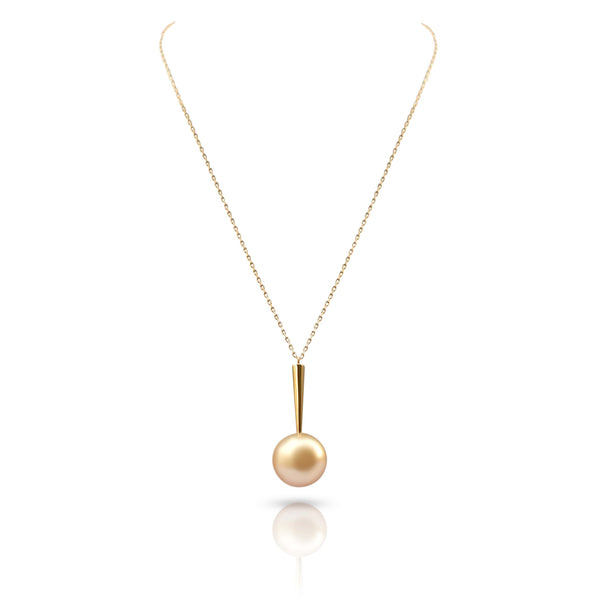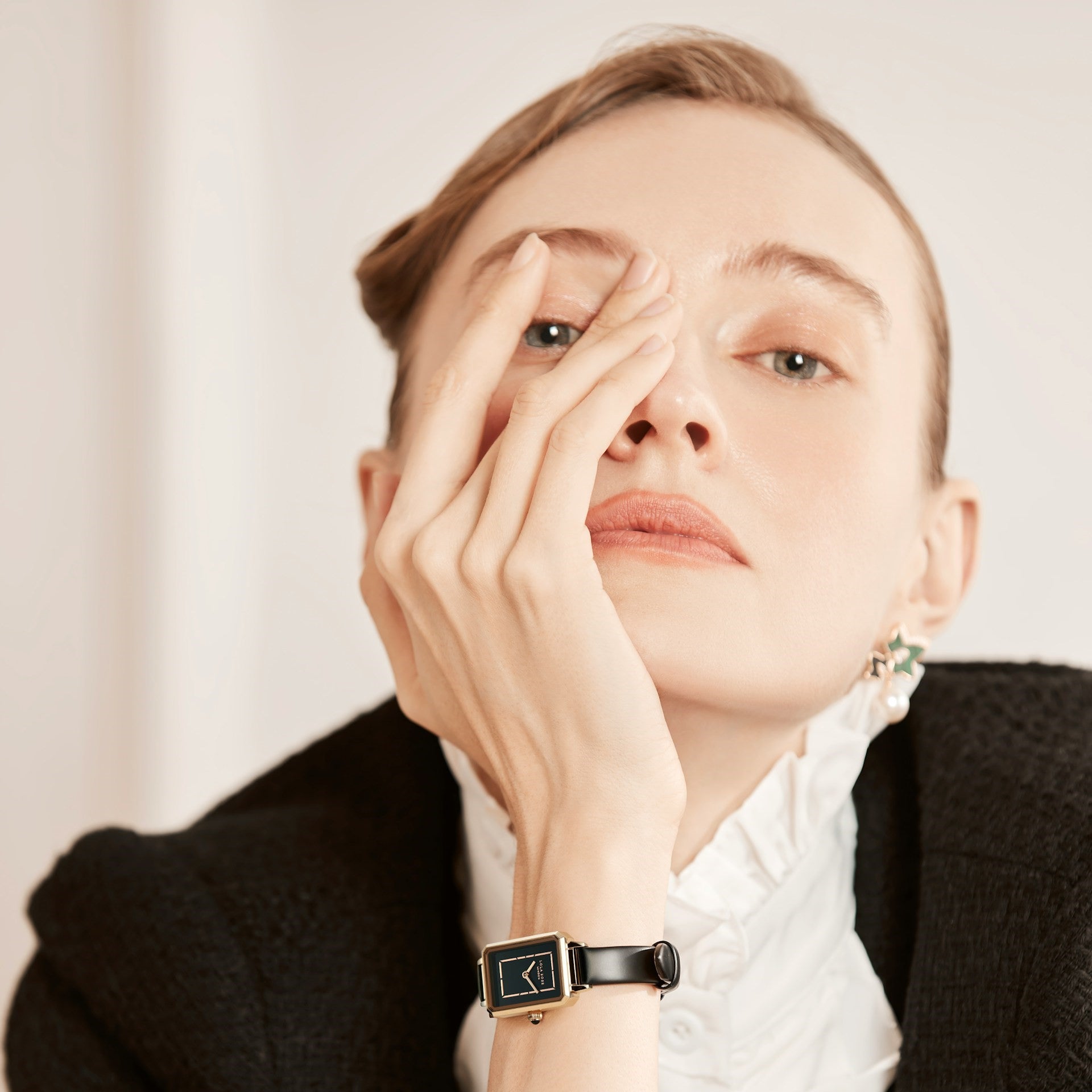Table of Contents
- Introduction
- Natural vs. Cultured Pearls: Understanding the Key Differences
- Saltwater vs. Freshwater Pearls: What You Need to Know
- Akoya Pearls: The Classic White Pearl
- Tahitian Pearls: The Exotic 'Black' Pearl
- South Sea Pearls: The Ultimate Statement of Luxury
- Pearls and Sustainability: The Eco-Friendly Choice
- Conclusion
Introduction
Have you ever wondered about the enchanting journey of a pearl, from the depths of the ocean to a cherished piece of jewellery? As a Certified Pearl Specialist, I’m passionate about sharing the captivating world of pearls with you. In this ultimate pearl jewellery guide, you’ll uncover the beauty and allure of the "Queen of Gems", deepening your appreciation for fine pearl jewellery and helping you choose pieces that reflect your style and values.
Not sure which pearl style suits you best? Take our Fashion Personality Quiz to discover the perfect piece for your unique taste!
Natural vs. Cultured Pearls: Understanding the Key Differences
You may have encountered natural and cultured pearls and wondered about their differences. While they share many fundamental qualities, their key distinction lies in how they form.
The Formation Process
- Natural Pearls: These pearls form organically in the wild without human intervention. Historically, the Persian Gulf was a major source of these exquisite gems, home to thriving pearl fisheries during the 19th and early 20th centuries.
- Cultured Pearls: These pearls are created in pearl farms, with human assistance carefully guiding their growth. In the late 19th century, visionary Japanese entrepreneur Kokichi Mikimoto pioneered the production of the first cultured pearls, making these once-rare gems more accessible to the world.
Environmental Impact and Scarcity
- Natural Pearls: Overharvesting has made natural pearls incredibly rare today. Once considered a luxury reserved for royalty and the elite, these pearls are now sought after for their historical significance and scarcity. Most natural pearls available are vintage pieces, passed down through generations, and are often sold at premium prices in auction houses.
- Cultured Pearls: Today, over 90% of pearls on the market are cultured, thanks to sustainable farming practices. Cultured pearls offer the same beauty as natural pearls while aligning with eco-conscious values, making them a perfect choice for those who appreciate luxury and sustainability.

Choosing the Right Pearl for You
When selecting the perfect pearl jewellery, consider what resonates with your values and personal style. Natural pearls are extraordinary treasures that tell a story if you cherish unique pieces steeped in history. On the other hand, if you appreciate luxurious gems embodying sustainability and timeless beauty, cultured pearls offer high quality while aligning with eco-conscious practices.
Not sure where to start? Take our Fashion Personality Quiz to discover the pearl pieces that reflect your unique style!

Explore the beauty of our Akoya Pearl Dangling Earrings – Perfect for adding a refined touch to your collection. Shop now.
Saltwater vs. Freshwater Pearls: What You Need to Know
Saltwater and freshwater pearls have unique characteristics that affect their value, beauty, and how they suit your style. By understanding their differences, you can appreciate the diversity of pearls — from the exquisite Akoya, mesmerising Tahitian, and opulent South Sea pearls found in saltwater, to the more accessible varieties from freshwater.
Origins
- Saltwater Pearls: These pearls are grown in molluscs found in oceans, bays, and lagoons. They are cultivated in remote and unpolluted waters of Japan, Australia, French Polynesia, Indonesia, and the Philippines.
- Freshwater Pearls: Cultivated in mussels residing in lakes and rivers, freshwater pearls are primarily farmed in man-made ponds, with China being the largest producer in the world.

Production Volumes
- Saltwater Pearls: Typically, only one pearl is harvested from each saltwater mollusc at a time, except for Akoya, which can yield up to five pearls. This limited production contributes to their exclusivity.
- Freshwater Pearls: Freshwater mussels can produce up to 32 pearls at a time, resulting in higher availability and affordability compared to their saltwater counterparts.

A closer look at our Akoya Pearl Dangling Earrings where exquisite craftsmanship meets timeless luxury. Discover now.
Market Pricing
- Saltwater Pearls: Due to their lower production volume and complex cultivation process, saltwater pearls command higher prices, making them a symbol of luxury and exclusivity for discerning buyers.
- Freshwater Pearls: With their higher production rates, freshwater pearls offer an accessible option that doesn't compromise on beauty, making them a budget-friendly choice for those who appreciate elegant jewellery.

Indulge in luxury with our Golden South Sea Pearl Pendant Necklace, crafted to elevate your personal style with a touch of luxury. Discover now.
Akoya Pearls: The Classic White Pearl
Akoya pearls are the epitome of elegance, admired for their brilliant lustre and timeless appeal. Long associated with grace and sophistication, Akoya pearls are a popular choice for bridal jewellery and timeless pieces passed down through generations.
Origins
- Primarily cultivated in Japanese waters.
- It is also found in China, Korea, and other regions.

Delicately crafted, our Akoya Pearl Pointed Pendant Necklace brings modern elegance to your style. Discover now.
Characteristics
- Size: Ranges from 2 mm to 11 mm, with the most common sizes being 6 to 8 mm.
- Shape: Often round or near-round and prized for their symmetry.
- Colour: Known for their white or cream tones, with overtones of pink or green that add a touch of sophistication.
Perfect for Any Occasion
Akoya pearls are an exquisite choice for both everyday elegance and special celebrations. Ideal for weddings, business functions, or elevating your daily style, these timeless pearls add a touch of sophistication to any outfit. Explore our curated collection of Akoya pearl jewellery to find the perfect piece that reflects your unique taste and makes a statement.
Experience the timeless elegance of our Akoya Pearl Pendant Necklace. Shop now.
Tahitian Pearls: The Exotic "Black" Pearl
Tahitian pearls are celebrated for their stunning dark colours and captivating overtones. From vibrant peacock to deep aubergine, these pearls exude exotic elegance and make a striking statement for anyone who loves distinctive, luxurious jewellery.
Origins
Tahitian pearls are cultivated throughout the islands of French Polynesia, a beautiful archipelago located in the South Pacific.

A glimpse into the elegance of our Tahitian Pearl Pendant Necklace – Perfect for adding a touch of mystery. Discover now.
Characteristics
- Size: Common sizes range from 9 mm to 11 mm, with some pearls reaching up to 18 mm.
- Colour: Beyond traditional black, Tahitian pearls come in stunning shades of grey and brown, with beautiful overtones like blue, green, purple, yellowish-green, or pink.
- Highly sought-after tones:
- Peacock: A beautiful mix of dark green and blue-grey shades, accented with soft hints of pink and purple.
- Aubergine: A rich, deep greyish-purple, reminiscent of the eggplant's hue.
- Pistachio: A unique yellowish-green to greenish-yellow tone, evoking the soft shades of pistachio nuts.
Perfect for An Exotic Touch
If you desire bold and exotic beauty in your jewellery, Tahitian pearls are the perfect choice. These captivating gems offer a unique allure that elevates your look, whether you're dressing up for a special occasion or adding sophistication to your everyday style. Explore our Tahitian Pearl Pendant Necklace, designed to infuse your style with a distinctive essence of the tropics.
Embrace the exotic allure of our Tahitian Pearl Pendant Necklace – A bold statement piece for the discerning. Shop now.
South Sea Pearls: The Ultimate Statement of Luxury
South Sea pearls are highly prized for their remarkable size and exquisite satiny lustre, making them the ultimate choice for luxurious statement jewellery. Renowned for their elegance and prestige, these pearls are perfect for discerning women who appreciate exceptional quality and timeless beauty.
Origins
Cultivated in the warm waters from Southeast Asia's southern coast to northern Australia and the Philippines, South Sea pearls are primarily sourced from Australia, Indonesia, the Philippines, and Myanmar.

Experience the luxurious beauty of our Golden South Sea Pearl Pendant Necklace, perfect for those seeking refined luxury. Discover now.
Characteristics
- Size: Often the largest of all pearl varieties, South Sea pearls typically range from 8 mm to 20 mm.
- Lustre: Known for their soft, satiny lustre, South Sea pearls exude a subtle glow that differentiates them from metallic sheen pearls.
- Colour:
- Silver: Ranges from white to silver, featuring occasional pink, blue, or green overtones.
- Gold: Displays shades from yellow to orangish-yellow, commonly referred to as "gold" or "golden" in the pearl trade.
Perfect for Making a Statement
If you seek to invest in luxurious jewellery that captivates attention, South Sea pearls are an unparalleled choice. Discover our Golden South Sea Pearl Pendant Necklace, crafted to embody elegance and prestige, allowing you to express your style with confidence.

Our Golden South Sea Pearl Pendant Necklace showcases the rare beauty of golden pearls. Shop now to add a touch of opulence to your jewelry collection.
Pearls and Sustainability: The Eco-Friendly Choice
Did you know that beyond their beauty, pearls are also an eco-friendly gemstone? Thanks to sustainable pearl farming, pearls are not only a symbol of elegance but also a positive force for the environment. Here’s how pearl farming supports both nature and communities:

- Preserving pristine waters: Clean water is essential for producing high-quality pearls, and pearl farming helps maintain these conditions, playing a crucial role in environmental conservation.
- Protecting coral reefs: Coral reefs provide vital nutrients and habitats for molluscs. Pearl farmers actively protect coral reefs by using eco-friendly practices to reduce pollution and preserve these ecosystems.
- Reducing pressure on wild molluscs: By cultivating pearls sustainably, pearl farming reduces the need to harvest wild molluscs, helping protect marine biodiversity.
- Supporting coastal communities: Pearl farming offers sustainable livelihoods to coastal communities, reducing overfishing and creating alternative income sources like tourism and pearl-related businesses.
By choosing pearls, you're not only embracing timeless elegance but also supporting sustainable practices that protect marine ecosystems, preserve coral reefs, and empower coastal communities. Explore our collection of eco-friendly pearl jewellery and make a statement that reflects both your style and values.
Conclusion

Discover our Akoya Pearl Pointed Pendant Necklace – A contemporary twist on a classic design. Shop now.
Now that you have a deeper understanding of the different types of pearls and their unique qualities, you’re ready to find the perfect pearl piece that embodies your taste and values. Explore our carefully curated collection of luxurious pearl jewellery and add a touch of timeless elegance to your life today.
If you're unsure which style resonates with you, take our Fashion Personality Quiz to discover pieces that truly reflect your individuality.






